
A Zeppelin is a type of rigid airship named after the German inventor Ferdinand von Zeppelin who pioneered rigid airship development at the beginning of the 20th century. Zeppelin's notions were first formulated in 1874 and developed in detail in 1893. They were patented in Germany in 1895 and in the United States in 1899. After the outstanding success of the Zeppelin design, the word zeppelin came to be commonly used to refer to all forms of rigid airships. Zeppelins were first flown commercially in 1910 by Deutsche Luftschiffahrts-AG (DELAG), the world's first airline in revenue service. By mid-1914, DELAG had carried over 10,000 fare-paying passengers on over 1,500 flights. During World War I, the German military made extensive use of Zeppelins as bombers and as scouts. Numerous bombing raids on Britain resulted in over 500 deaths.

Aerial warfare is the use of military aircraft and other flying machines in warfare. Aerial warfare includes bombers attacking enemy installations or a concentration of enemy troops or strategic targets; fighter aircraft battling for control of airspace; attack aircraft engaging in close air support against ground targets; naval aviation flying against sea and nearby land targets; gliders, helicopters and other aircraft to carry airborne forces such as paratroopers; aerial refueling tankers to extend operation time or range; and military transport aircraft to move cargo and personnel.

This is a list of aviation-related events from 1915:

Godzilla Raids Again is a 1955 Japanese kaiju film directed by Motoyoshi Oda, with special effects by Eiji Tsuburaya. Produced and distributed by Toho Co., Ltd., it is the second film in the Godzilla franchise, and a sequel to Godzilla (1954). The film stars Hiroshi Koizumi, Setsuko Wakayama, Minoru Chiaki, and Takashi Shimura, with Haruo Nakajima as Godzilla and Katsumi Tezuka as Anguirus. In the film, Japan struggles to survive Godzilla's return, as well as its destructive battle against its ancient foe Anguirus.
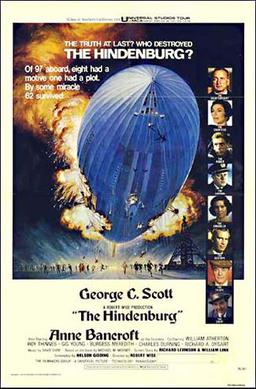
The Hindenburg is a 1975 American Technicolor disaster film based on the 1937 Hindenburg disaster. The film stars George C. Scott. It was produced and directed by Robert Wise, and was written by Nelson Gidding, Richard Levinson and William Link, based on the 1972 book of the same name by Michael M. Mooney.

Thirteen Days is a 2000 American historical political thriller film directed by Roger Donaldson. It dramatizes the Cuban Missile Crisis of 1962, seen from the perspective of the US political leadership. Kevin Costner stars as top White House assistant Kenneth P. O'Donnell, with Bruce Greenwood featured as President John F. Kennedy, Steven Culp as Attorney General Robert F. Kennedy, and Dylan Baker as Secretary of Defense Robert McNamara.
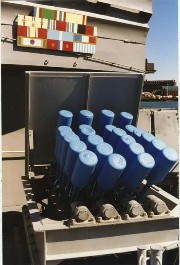
An anti-submarine weapon (ASW) is any one of a number of devices that are intended to act against a submarine and its crew, to destroy (sink) the vessel or reduce its capability as a weapon of war. In its simplest sense, an anti-submarine weapon is usually a projectile, missile or bomb that is optimized to destroy submarines.
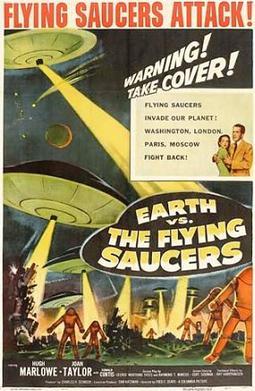
Earth vs. the Flying Saucers is a 1956 American science fiction film from Columbia Pictures. It was produced by Charles H. Schneer, directed by Fred F. Sears, and stars Hugh Marlowe and Joan Taylor. The stop-motion animation special effects were created by Ray Harryhausen. The storyline was suggested by the bestselling 1953 non-fiction book Flying Saucers from Outer Space by Maj. Donald Keyhoe. The film was released as a double feature with The Werewolf.
The Invasion is the partly missing third serial of the sixth season of the British science fiction television series Doctor Who, which was first broadcast in eight weekly parts from 2 November to 21 December 1968.

Invasion literature is a literary genre that was popular in the period between 1871 and the First World War (1914–1918). The invasion novel was first recognised as a literary genre in the UK, with the novella The Battle of Dorking: Reminiscences of a Volunteer (1871), an account of a German invasion of England, which, in the Western world, aroused the national imaginations and anxieties about hypothetical invasions by foreign powers; by 1914 the genre of invasion literature comprised more than 400 novels and stories.
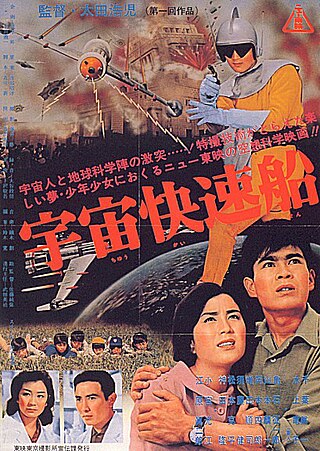
Invasion of the Neptune Men is a 1961 superhero film produced by Toei Company Ltd. The film stars Sonny Chiba as Iron Sharp.
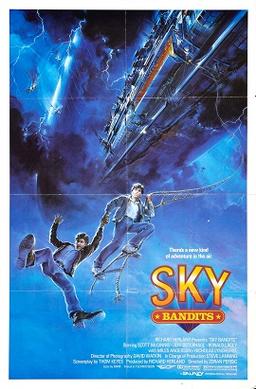
Sky Bandits, also known as Gunbus, is a 1986 British adventure film about two outlaws from the Wild West, drafted to the battlefields of WWI, who enlist in the fledgling Royal Flying Corps flying early warplanes called gunbuses.

Sailor Moon S: The Movie is a 1994 Japanese animated superhero fantasy film directed by Hiroki Shibata and written by Sukehiro Tomita based on the Sailor Moon manga series by Naoko Takeuchi. Produced by Toei Animation, it takes its name from the third season of the anime series, as Toei Company distributed it around the same time, and the second film installment for the series, following Sailor Moon R: The Movie (1993). Loosely adapting The Lover of Princess Kaguya side story from the manga, it centers the Sailor Guardians stopping the invasion of the snow queen named Kaguya, while Luna falls in love with a human astronomer named Kakeru. The film stars Kotono Mitsuishi as the voice of Sailor Moon, alongside Aya Hisakawa, Michie Tomizawa, Emi Shinohara, Rika Fukami, Megumi Ogata, Masako Katsuki, Chiyoko Kawashima, Keiko Han, Kae Araki and Tōru Furuya. It was released in Japan on December 4, 1994, as part of the Winter '94 Toei Anime Fair.
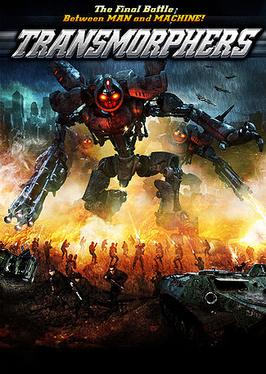
Transmorphers is a 2007 American science fiction alien invasion film released direct-to-DVD on June 26, 2007. It was written and directed by Leigh Scott and produced by David Michael Latt and The Asylum, "a studio whose work gets slightly more respect than the Girls Gone Wild series, and slightly less than backyard-wrestling DVDs", according to Keith Phipps of AVClub. Transmorphers was developed as a mockbuster, intending to capitalize on Michael Bay's Transformers. The film was followed by a 2009 prequel, titled Transmorphers: Fall of Man.

Battle: Los Angeles is a 2011 American military science-fiction action film directed by Jonathan Liebesman and written by Chris Bertolini. The story follows a Marine staff sergeant played by Aaron Eckhart who leads a platoon of U.S. Marines, joined by other stranded military personnel, defending Los Angeles from alien invasion. The ensemble cast includes Michelle Rodriguez, Ramon Rodriguez, Bridget Moynahan, Ne-Yo, and Michael Peña.

Walter Robert Booth was a British magician and early pioneer of British film. Collaborating with Robert W. Paul and then Charles Urban mostly on "trick" films, he pioneered techniques that led to what has been described as the first British animated film, The Hand of the Artist (1906). Booth is also notable for making the earliest film adaptation of A Christmas Carol with the silent film Scrooge, or, Marley's Ghost (1901).
Independence Day is a franchise of American science fiction action films that started with Independence Day in 1996, which was followed by the sequel, Independence Day: Resurgence in 2016. The franchise revolves around extraterrestrials invading Earth and seeking to eradicate mankind while the remaining human resistance uses everything at their disposal to defeat the invaders and take back the planet. Now considered to be a significant turning point in the history of the Hollywood blockbuster, the original film was released worldwide on July 3, 1996, but began showing on July 2 on limited release as a result of a high level of anticipation among moviegoers. The film grossed over $817.4 million worldwide, becoming the highest-grossing film of 1996 and, briefly, the second-highest-grossing film worldwide of all time behind 1993's Jurassic Park. Currently, it ranks 69th on the list of highest-grossing films, and was at the forefront of the large-scale disaster film and sci-fi resurgence of the mid-late 1990s. The film won the Academy Award for Best Visual Effects and was nominated for the Academy Award for Best Sound Mixing.
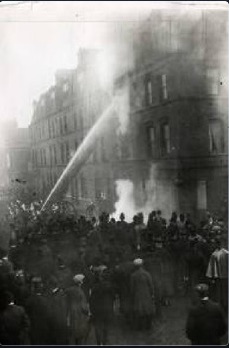
The Aerial Anarchists is a 1911 British silent science fiction film directed by Walter R. Booth. It is the third and final film in Booth's science fiction series seeking to present a picture of futuristic aerial warfare. Aerial Anarchists followed on from Aerial Torpedo and Aerial Submarine and is the first real science fiction series made in the United Kingdom. The story focuses on an attack against London by a fleet of airships from an unknown country.

Fearful Attack of the Flying Saucers is a 1956 independent Japanese tokusatsu science fiction film directed and written by Shinichi Sekizawa, with special effects and cinematography by Sadao Uemura. Produced by Kokumotsu Films and distributed by Shintoho, it is Sekizawa's sole directorial credit and stars Tadao Takashima, Junko Ebata, Taiji Tonoyama, Hiroshi Sugi, Shigeru Amachi, and Junji Masuda. In the film, a group of Japanese scientists deal with a sudden alien invasion by inventing a rocket in order to save the planet.
















